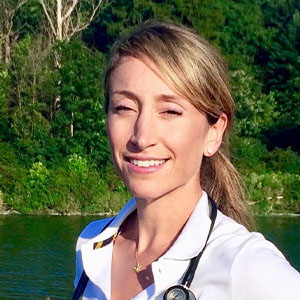Researcher’s new online platform demonstrates the power of physical activity in chronic disease management

By Prabhjot Sohal
Gentle chair yoga for those with brain and spinal cord injuries, 17-minute high-intensity interval training (HIIT) for wheelchair users and simple exercises for individuals living with Multiple Sclerosis (MS).
These are just a few examples of the physical activity resources that a newly launched online platform, My Active Ingredient, has curated and made accessible for individuals living with chronic health conditions.
Founded by Schulich School of Medicine & Dentistry researcher and former Olympic athlete Dr. Jane Thornton, the online platform aims to transform the perception and practice of exercise for those living with chronic health conditions. The platform offers a collaborative space where patients, health-care providers and the public can exchange their favourite ‘movement hacks’ and inspire each other with stories of success.
 Dr. Jane Thorton, Schulich School of Medicine & Dentistry (Photo supplied)
Dr. Jane Thorton, Schulich School of Medicine & Dentistry (Photo supplied)
“In my practice, I often encounter patients asking for resources tailored to their health conditions, many of whom believe they aren't fit enough to reap the benefits of exercise. I intend to help change those perceptions and provide access to different options,” said Thornton, Canada Research Chair in Injury Prevention and Physical Activity for Health and professor in the Departments of Family Medicine and Epidemiology & Biostatistics. “Of course, we also ask that people accessing the resources check with their doctor first if they have any concerns about their condition or treatment.”
With a PhD in sport and exercise medicine and subsequent medical training, Thornton is now using her research and advocacy to implement the idea of ‘movement as medicine.’
“My vision is to connect people with appropriate resources, so those with health conditions or other barriers can access physical activity. It's all about finding the right 'active ingredient' for each individual,” said Thornton.
The initiative is closely tied to the Western Research Hub for Physical Activity and Health, a multidisciplinary team of scholars from Western, committed to advocating for and implementing sustainable, culturally relevant physical activity opportunities. As part of the initiative, a Community Advisory Council (CAC) has been established made up of representatives from local organizations and patient partners who co-design and inform the project.
Over the next two years, the Western Research Hub will tackle eight priorities, identified and voted on by the community. This action plan ranges from engaging with key stakeholders and harmonizing physical activity messaging among health-care providers to exploring technology to promote physical activity and supporting social connectedness for older adults through physical activity programs.
The online platform offers an important way to address the World Health Organization’s Global Action Plan on Physical Activity to “create active people,” said Thornton.
“Through peer-to-peer interactions, we aim to demonstrate the transformative power of physical activity. The hub’s library of resources, all collaboratively curated, can be used by health-care providers to advise their patients about physical activity and for individuals seeking advice to make physical activity an enjoyable part of their daily routine.”








